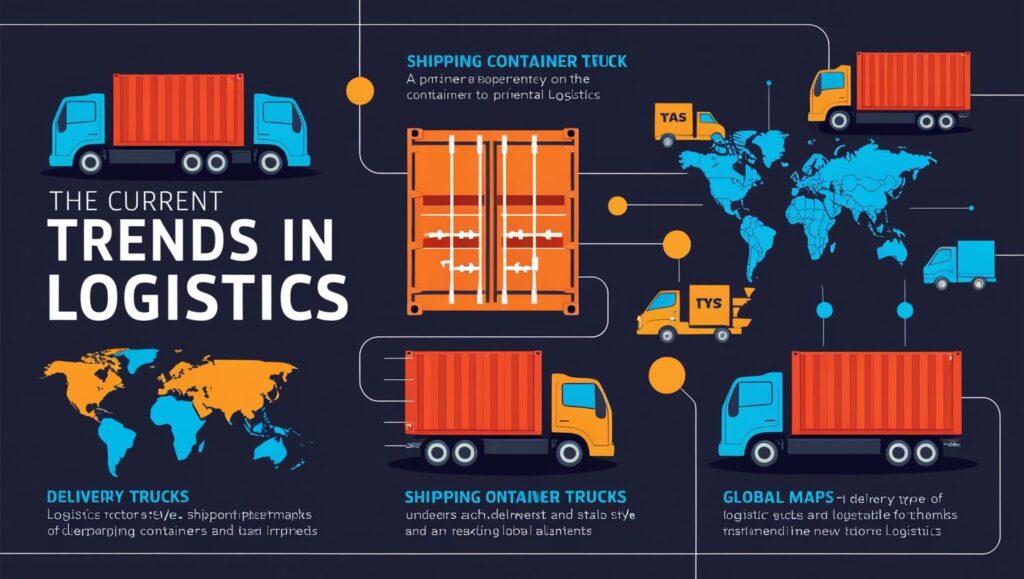
The logistics industry is a sector that continues to evolve rapidly, in line with increasingly complex market demands. In recent years, logistics trends, driven by technological advancements, have revolutionized the way companies manage goods distribution, delivery, and supply chains. Emerging logistics trends, such as the use of artificial intelligence (AI), automation, and autonomous vehicles, are opening up new opportunities to enhance efficiency. This article will discuss the latest logistics trends and how these innovations are reshaping the industry to make shipping goods faster and easier.
1. Artificial Intelligence (AI) in Logistics
One of the most exciting logistics trends today is the integration of artificial intelligence (AI). AI allows companies to analyze vast amounts of data, offering valuable insights that help improve planning, delivery, and supply chain management.
Some examples of AI applications in logistics include:
- More Accurate Planning: AI helps companies predict demand for goods, allowing them to manage stock more effectively and reduce wastage.
- Delivery Route Optimization: AI is also used to determine the best delivery routes, considering traffic conditions, weather, and other factors, saving time and reducing operational costs.
- Inventory Management: With AI, companies can monitor inventory in real-time, ensuring the right products are available when needed.
AI’s growing presence in logistics trends emphasizes its importance in modernizing the sector.
2. Warehouse and Packaging Process Automation
Another key logistics trend is the rise of automation. The use of robots and automated systems in warehouses has become increasingly widespread, expediting the picking and packing of goods. This is part of a broader movement toward more efficient and less error-prone logistics operations.
Some of the technologies used in automation in logistics include:
- Robot Pickers: Robots that can pick items from shelves and bring them to the packing area, reducing the time needed to process orders.
- Automated Storage and Retrieval System (ASRS): A system designed to store and retrieve goods automatically, increasing warehouse efficiency.
- Automated Packaging: These systems can customize packaging according to product size, improving packaging efficiency and reducing waste.
Automation is one of the most prominent logistics trends, streamlining operations and improving productivity.
3. Autonomous Vehicles and Drones for Delivery
Among the most revolutionary logistics trends are autonomous vehicles and drones. These technologies have the potential to change the face of goods delivery.
Reasons for excitement about autonomous vehicles in logistics include:
- Autonomous Trucks: Companies like Tesla are developing autonomous trucks that drive without a driver, reducing operating costs and accelerating delivery speed.
- Drone Delivery: Amazon and other companies are testing drone delivery, offering faster shipment for smaller items that do not require large vehicles.
The integration of autonomous vehicles into delivery processes is a growing trend in the logistics sector, focusing on reducing costs and increasing efficiency.
4. Blockchain in Supply Chain for Security and Transparency
Blockchain is quickly becoming one of the logistics trends to watch due to its ability to increase security and transparency within supply chains. It allows for the digital recording of every transaction and movement of goods, providing greater visibility across all parties involved.
Benefits of blockchain in logistics include:
- Real-Time Tracking of Goods: Blockchain technology enables real-time tracking, ensuring greater transparency and reducing the risk of fraud.
- Transaction Security: Blockchain’s decentralized nature ensures that data on products and transactions cannot be manipulated, providing customers with increased confidence.
- Automated Verification: Blockchain allows for automated verification of transactions, reducing administrative costs.
Blockchain is a transformative element in the growing logistics trends focused on enhancing security and supply chain efficiency.
5. Green Logistics and Sustainability
As awareness of climate change rises, logistics trends are increasingly focusing on sustainability. More logistics companies are adopting eco-friendly practices to reduce their carbon footprint and promote environmentally friendly operations.
Examples of green logistics include:
- Environmentally Friendly Vehicles: Companies are turning to electric vehicles to reduce emissions and their environmental impact.
- Eco-Friendly Packaging: Many companies are switching to recyclable or biodegradable packaging materials to cut down on plastic waste.
- Delivery Optimization: Using AI technologies to optimize delivery routes reduces fuel consumption and emissions.
Sustainability is becoming a major focus in logistics trends, as companies align with consumer expectations and environmental regulations.
As logistics evolves, logistics trends such as automation, blockchain, and sustainability are reshaping the industry. The S1 Digital Supply Chain study program prepares students to understand and implement these technologies in the real world, ensuring they are ready to be part of the digital revolution in logistics.
Tags: Teknik Logistik, | S1 Teknik Logistik |, S1 Digital Supply Chain Telkom |, Telkom University